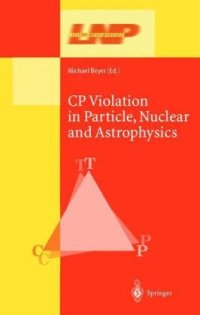
Ebook: CP Violation in Particle, Nuclear and Astrophysics
- Genre: Physics
- Tags: Elementary Particles and Nuclei, Physics beyond the Standard Model
- Series: Lecture Notes in Physics 591
- Year: 2002
- Publisher: Springer-Verlag Berlin Heidelberg
- City: Berlin; New York
- Edition: 1
- Language: English
- djvu
This book provides a collection of up-to-date lectures on the physics of CP violation. As such it covers all relevant modern fields of elementary particle, nuclear and astrophysics. Special attention is paid to the neutral meson systems and the recent confirmation of CP violation in the B meson system. The theory and the novel methods needed for these experiments are given in detail. The classical and ongoing searches for the electric dipole moment of the neutron and other null tests of time-reversal symmetry are included. An elementary introduction is given to the astrophysical implications of CP violation, to tackle the puzzle of matter--antimatter asymmetry in our Universe. The aim of the book is to present recent achievements and discuss future developments in a way accessible to both postgraduate students and nonspecialist researchers. For the experienced researcher, the book will serve as a modern source of reference on this topic.
This book provides a collection of recent lectures on the physics of CP violation. As such, it covers all relevant modern fields of elementary particle, nuclear, and astrophysics. Special attention is paid to the neutral meson systems and the recent confirmation of CP violation in the B meson system. The theory and the novel methods needed for these experiments are given in detail. The classical and ongoing searches for the electric dipole moment of the neutron and other null tests of time-reversal symmetry are included. An elementary introduction is given to the astrophysical implications of CP violation, to tackle the puzzle of matter - antimatter asymmetry in our Universe. CP Violation in Particle, Nuclear, and Astrophysics presents recent achievements and discusses future developments in a way accessible to postgraduate students and nonspecialist researchers. For the experienced researcher, the book will serve as a modern source of reference on this topic.